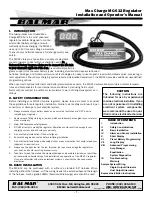
E-Band and V-Band - Survey on status of worldwide regulation
6
Overview on Regulation status
General background
Sometimes there is confusion and controversy about microwave frequency band letter definitions, since
there is no unique view in literature. Each letter definition is widely variable depending on the
standardization body that introduced it in the past.
For the purpose of this document:
V-Band is intended to span from 57 GHz to 66 GHz, where the oxygen absorption is significant;
however, also the lower portion spanning from 48.5 GHz to 57 GHz can be generally included in
the V-Band definition.
E-Band is intended to cover 71-76 GHz and 81-86 GHz.
Terminology and definitions
Many of the concepts related to spectrum use do not have unique definitions endorsed in ITU
vocabulary; general concepts are likely to be understood by experts, but slight differences in
terminology and their interpretation are present among regional organizations (ECC, FCC etc.) and
individual administrations.
This clause tries to propose, as far as possible, the best definition and variant of terminology for the
regulatory processes to access the spectrum.
Band allocations and designations
Access to the radio spectrum is based on the Table of Frequency Allocations of the International
Telecommunications Union (ITU) Radio Regulations, where defined categories of radio service are
allocated frequency bands in different parts of the spectrum and for different ITU regions [C]. ITU table
allocation for V-Band and E-Band are reported in Appendix [D].
The spectrum allocation can be on either exclusive, shared, primary or secondary basis. Due to scarcity
of the frequency spectrum, many bands are allocated for more than one radio service and are,
therefore, shared. Spectrum sharing studies aim to identify technical or operational compatibilities that
will enable radio services to operate in the same (or adjacent) frequency bands without causing
unacceptable interference to each other. Often, sharing becomes possible when limits are placed on
certain system parameters for example, antenna radiation patterns, transmission power etc. Decisions
are taken at the national level on the purpose or purposes for which particular frequencies will be used.
These decisions are reflected in the International and National Tables of Frequency Allocations.
Some keywords are given here:
Allocation (to a Service)
: Each band has a general allocation to one or more “services”; the allocation
may be worldwide or regional, but each administration can autonomously decide differently.
Radio Service
: The radio services (e.g. Fixed, Mobile, Radiodetermination, etc.) are all listed in the
Radio Regulations.
Radio application
: Under a service there might be several “applications” (e.g. point-to-point, point-to-
multipoint are different applications under fixed service). To be specifically used by a radio application
the band should be “designated/dedicated” to that application.








































